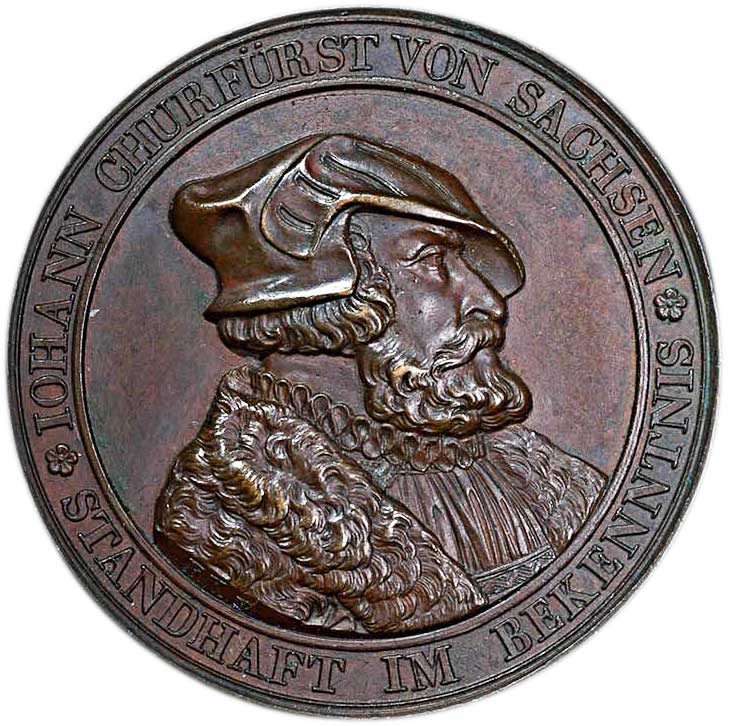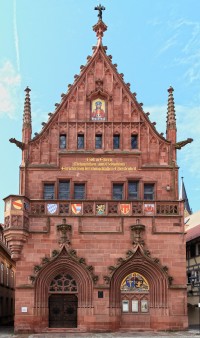Vorderseite: Brustbild nach rechts im Pelzrock und mit Barett; am Armabschnitt signiert F.K.F. (= Friedrich König hat [diese Medaille] gefertigt.
Umschrift: IOHANN CHURFÜRST VON SACHSEN, unten STANDHAFT IM BEKENNTNIS
Rückseite: Zwischen zwei Leuchten steht eine Frau mit nach hinten wehendem Schleier als Personifizierung des Glaubens, den rechten Fuß auf der Weltkugel. In der linken Hand hält sie einen Palmzweig und eine Schriftrolle mit der Aufschrift AUGSB / CONF. Rechts neben ihr steht eine Säule mit der Inschrift 25 IUNI / 1530 auf dem Sockel; oben drei fünfstrahligen Sterne; im Abschnitt III IUBELFEIER / 25 IUNI 1830.
Medailleur: Anton Friedrich König (1756–1838)
en

